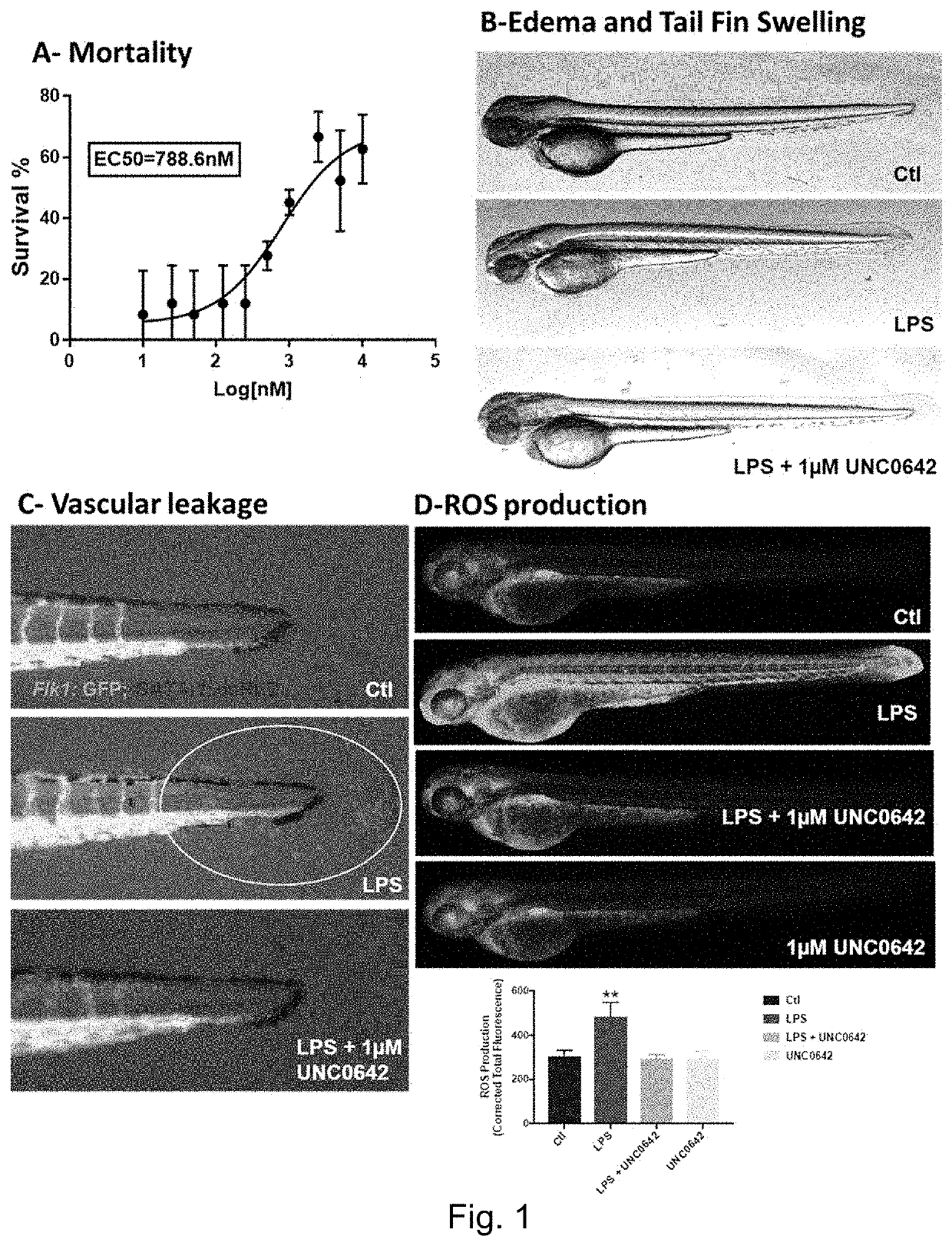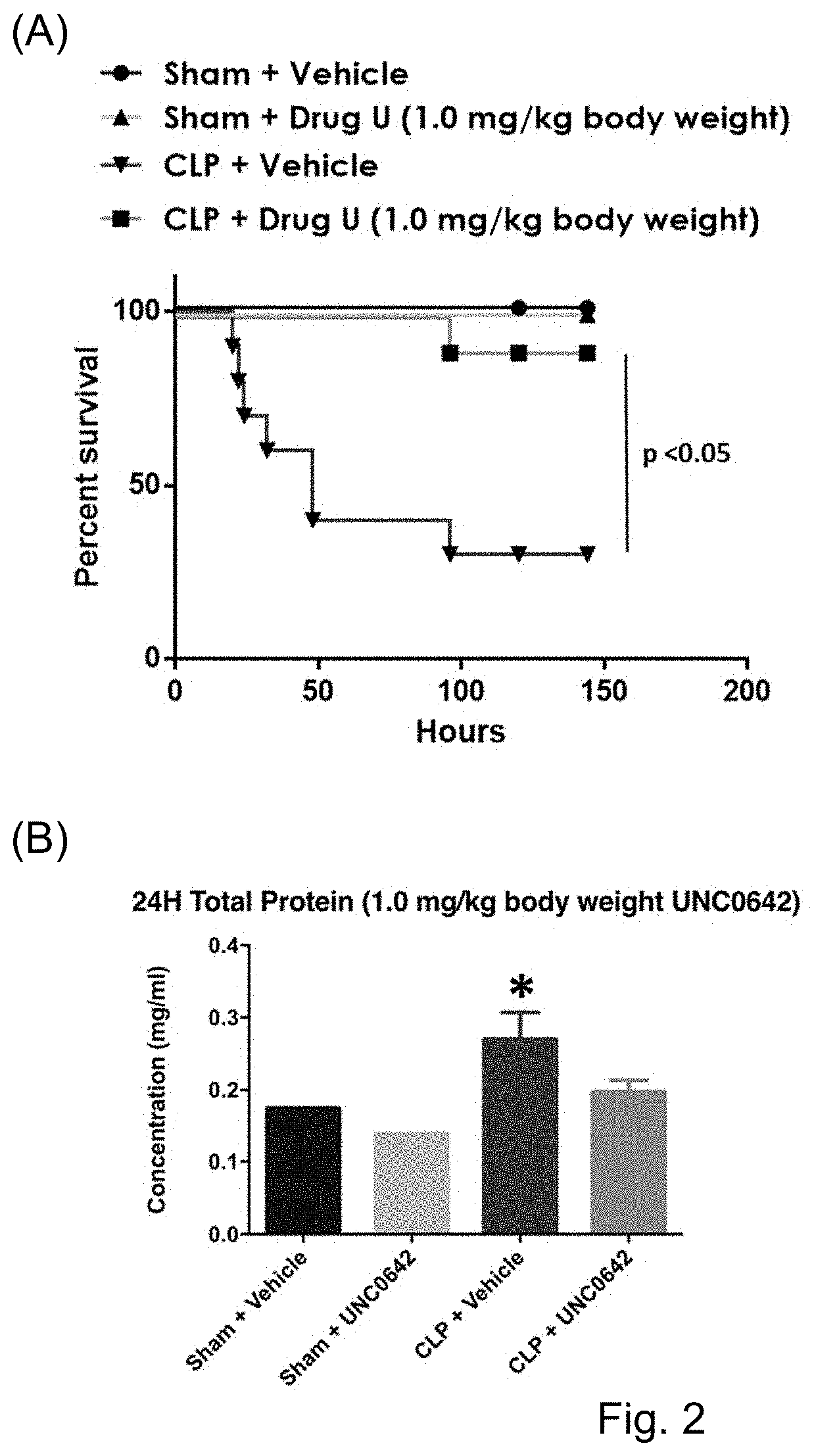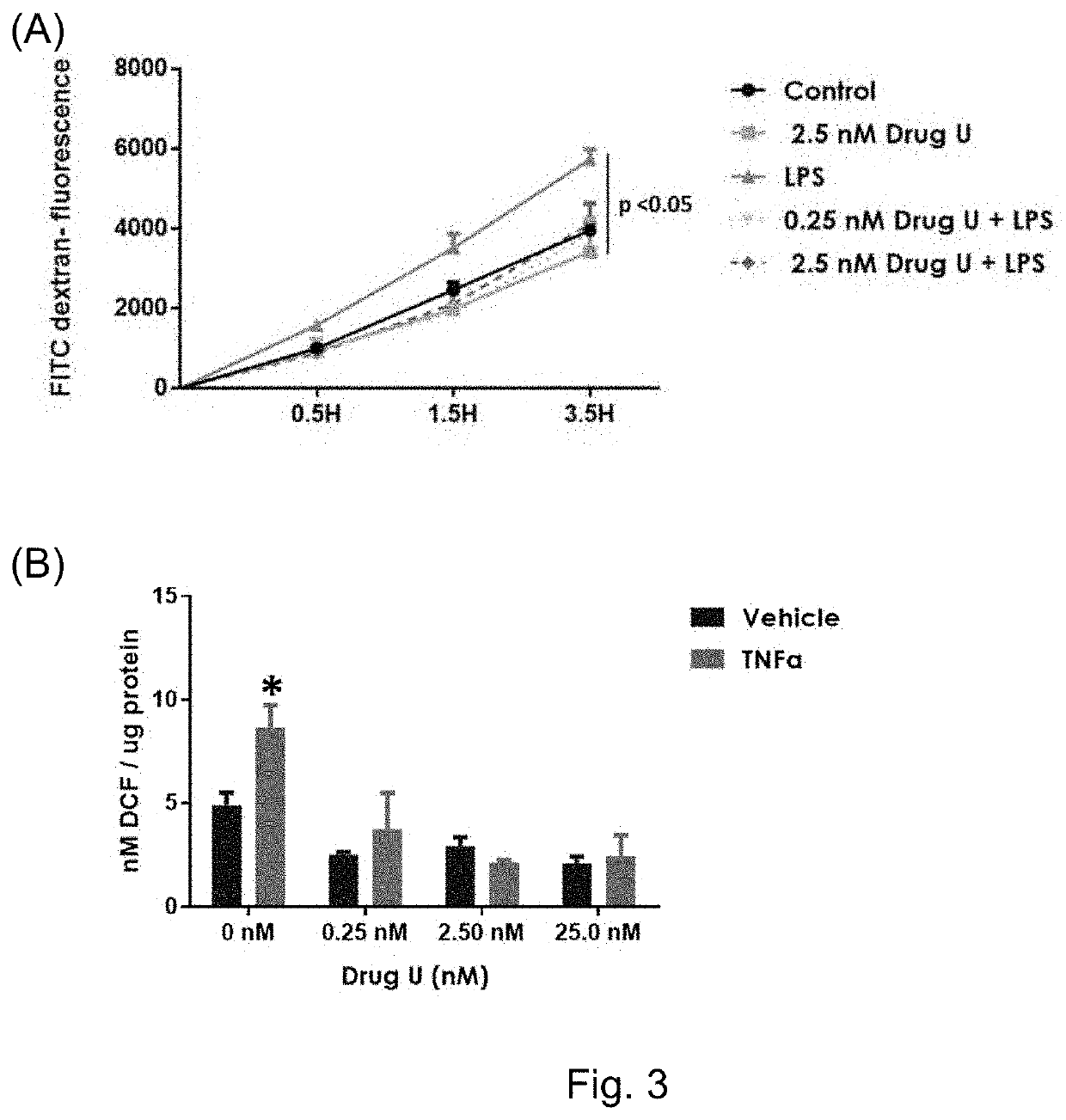Methods of treating a vascular leakage-associated disease or disorder
a vascular leakage and disease technology, applied in the field of methods of treating a vascular leakage-associated disease or disorder, can solve the problems of 6 million deaths, high mortality associated, and requires intensive clinical research and radical intervention strategies, and achieves high throughput in vivo drug screening, low cost, and high fecundity.
- Summary
- Abstract
- Description
- Claims
- Application Information
AI Technical Summary
Benefits of technology
Problems solved by technology
Method used
Image
Examples
example 1
and Methods
Zebrafish Strains and Care
[0120]Adult and embryonic zebrafish were raised, cared for and staged using standard laboratory procedures (Avdesh et al. 2012; Nusslein-Volhard & Dahm, 2002; Westerfield 2000; Kimmel et al. 1995). Briefly, zebrafish were raised on 14 h / 10 h light / dark cycle at 28.5±0.5° C. Embryos were obtained via natural mating and cultured in egg water. All experiments in this study were carried out according to the ethical guidelines established by the St. Michael's Hospital (SMH) Animal Committee. Embryos older than 24 hours post-fertilization (hpf) were treated with 200 μM 1-phenyl-2-thiourea (PTU) to block pigmentation.
[0121]An LPS induced zebrafish sepsis model which mimics the hallmarks of human sepsis was developed (Philip et al., 2017). Zebrafish show varied susceptibility and responsiveness to LPS from different bacterial strains. Exposure of zebrafish larvae at 3 days post-fertilization (dpf) to two types of LPS (LPS from Esche...
example 2
nt of a Zebrafish Model of Sepsis
[0152]With a sequenced genome, the zebrafish has recently emerged as a robust vertebrate model for disease modeling because of its physiological similarity to humans, high fecundity, low costs, transparency and relative ease of embryonic manipulation (Lieschke and Currie, 2007). In drug research, the zebrafish has also emerged as a key model organism for high throughput in vivo drug screening. In contrast to traditional target-based screening in vitro, the zebrafish provides a whole vertebrate system for phenotype-based screening. It combines the biological complexity of in vivo models with the ability for high-throughput screening and quick assessment of potential toxicity early on in the drug development process (Miscevic, Rotstein and Wen, 2012). Due to the nature of the in vivo screen and initial toxicity assessment of the compounds on developing embryos, lead compounds identified from a phenotype-based in vivo screen targeting entire disease pat...
example 3
ic Effects of UNC0642 in a Zebrafish Model of Sepsis
[0154]High-throughput screening in the zebrafish model of sepsis identified UNC0642, an epigenetic regulator of histone methylation with potent anti-sepsis properties.
[0155]UNC0642 improved the survival of septic zebrafish larvae in a dose dependent manner with an EC50 of 788.6 nM. UNC0642 also significantly reduced LPS-induced vascular leakage and tailfin edema. While LPS-treated larvae showed a significantly higher number of leaked out red blood cells at the tail fin region (measured by using transgenic zebrafish larvae having fluorescently labelled red blood cells), this pathophysiological manifestation of vascular leakage was mitigated in larvae which received UNC0642 treatment. Another pathophysiological hallmark of sepsis is the excessive generation of ROS, which inevitably leads to oxidative stress in the microvasculature. It was found that UNC0642 significantly reduced LPS-induced ROS production by 40%. This effect was most...
PUM
 Login to View More
Login to View More Abstract
Description
Claims
Application Information
 Login to View More
Login to View More - R&D Engineer
- R&D Manager
- IP Professional
- Industry Leading Data Capabilities
- Powerful AI technology
- Patent DNA Extraction
Browse by: Latest US Patents, China's latest patents, Technical Efficacy Thesaurus, Application Domain, Technology Topic, Popular Technical Reports.
© 2024 PatSnap. All rights reserved.Legal|Privacy policy|Modern Slavery Act Transparency Statement|Sitemap|About US| Contact US: help@patsnap.com










